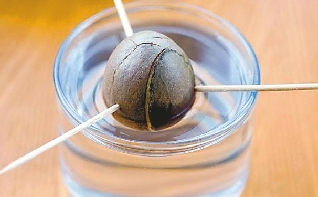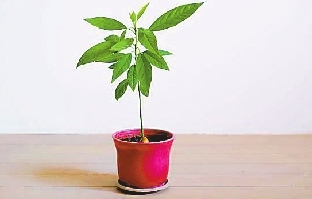

AVOCADOS make everything taste better: eggs, sandwiches, salads, even desserts. But as they can cost more than US$1 a pop, it’s tempting to start growing these nutrient-packed, heart-healthy fruits yourself. Growing an avocado tree indoors is as simple as saving a leftover pit and gathering up a few common supplies. It’s an easy foray into gardening and pretty much the perfect low-cost science experiment to try with kids. However, it can take anywhere from five to 13 years for avocado trees to start producing fruit and they rarely do so indoors. Anyway, it’s a fun project to try during the upcoming holiday. Here’s how to grow your own avocado tree from a pit in a few simple steps: What you’ll need are an avocado seed, toothpicks, a drinking glass or jar, a 25-cm pot, potting soil and a trowel. How to grow an avocado tree 1. Save an avocado pit (without cutting or breaking it) and wash off any residue. Let dry, then insert 3-4 toothpicks about halfway up the side of the pit. 2. Suspend the pit broad end down in a drinking glass or jar. Fill the container with enough water to submerge the bottom third of the seed. 3. Place the glass in a warm spot out of direct sunlight and change the water regularly. Roots and a sprout should appear in about 2-6 weeks. If not, start with another seed. 4. When the sprout gets about 15 centimeters tall, cut it back to about 7.5 centimeters to encourage more root growth. 5. Once the stem grows out again, plant the pit in a 25-cm pot filled with rich potting soil. Now it’s time to let your avocado tree grow. How to care for it Place the pot in a sunny spot and water lightly but often. The goal is to keep the soil moist but not sopping wet. You can place the tree outdoors in the summer as long as temps stay above 8 degrees Celsius. Occasionally prune your plant (every 15 cm or so) to encourage fullness. You can also plant avocado trees outside in regions with no frost. They do best in rich, well-drained soil with full sun. Water two to three times per week by soaking the soil thoroughly and then letting it dry out before watering again. As yellow leaves signal you’re overwatering, dial back to avoid root rot when that happens. (SD-Agencies) | 
